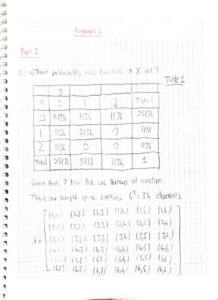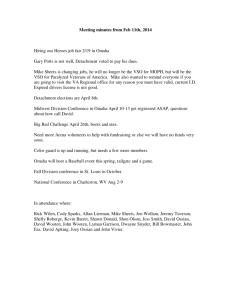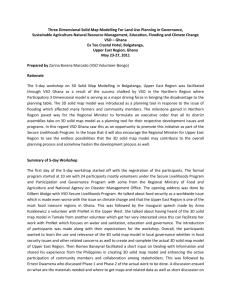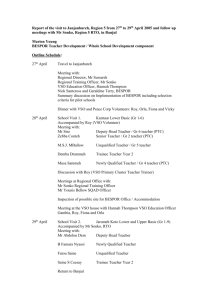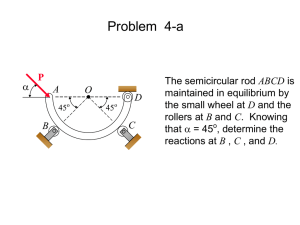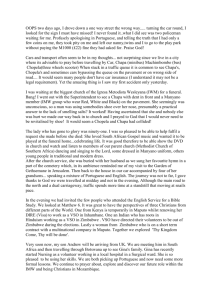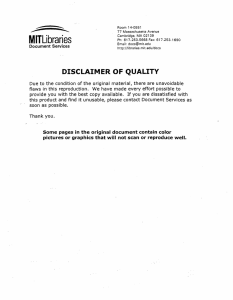3.7 The second solution formula
advertisement
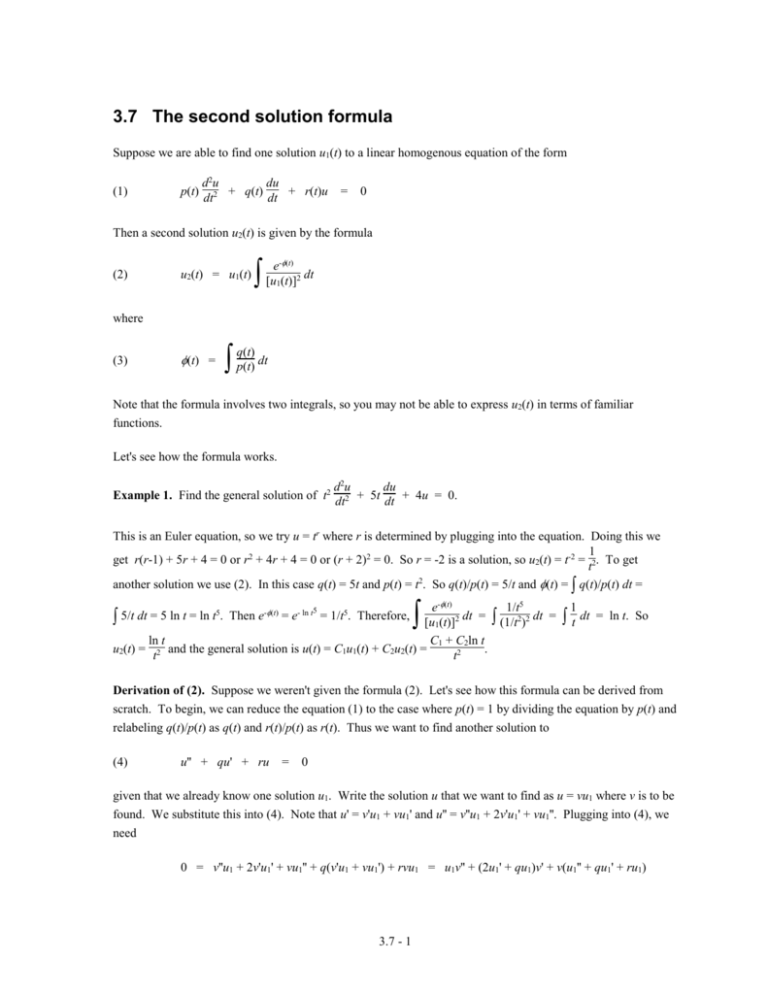
3.7 The second solution formula Suppose we are able to find one solution u1(t) to a linear homogenous equation of the form (1) p(t) d2u du + q(t) + r(t)u dt2 dt = 0 Then a second solution u2(t) is given by the formula (2) u2(t) = u1(t) e-(t) dt [u1(t)]2 where (3) (t) = dt q(t) p(t) Note that the formula involves two integrals, so you may not be able to express u2(t) in terms of familiar functions. Let's see how the formula works. Example 1. Find the general solution of t2 d2u du + 5t + 4u = 0. dt2 dt This is an Euler equation, so we try u = tr where r is determined by plugging into the equation. Doing this we 1 get r(r-1) + 5r + 4 = 0 or r2 + 4r + 4 = 0 or (r + 2)2 = 0. So r = -2 is a solution, so u2(t) = t-2 = 2. To get t another solution we use (2). In this case q(t) = 5t and p(t) = t2. So q(t)/p(t) = 5/t and (t) = q(t)/p(t) dt = e-(t) 1/t5 dt = 2 dt = [u1(t)] (1/t2)2 ln t C1 + C2ln t u2(t) = 2 and the general solution is u(t) = C1u1(t) + C2u2(t) = . t t2 5/t dt = 5 ln t = ln t5. Then e-(t) = e- ln t = 1/t5. Therefore, 5 1 t dt = ln t. So Derivation of (2). Suppose we weren't given the formula (2). Let's see how this formula can be derived from scratch. To begin, we can reduce the equation (1) to the case where p(t) = 1 by dividing the equation by p(t) and relabeling q(t)/p(t) as q(t) and r(t)/p(t) as r(t). Thus we want to find another solution to (4) u'' + qu' + ru = 0 given that we already know one solution u1. Write the solution u that we want to find as u = vu1 where v is to be found. We substitute this into (4). Note that u' = v'u1 + vu1' and u'' = v''u1 + 2v'u1' + vu1''. Plugging into (4), we need 0 = v''u1 + 2v'u1' + vu1'' + q(v'u1 + vu1') + rvu1 = u1v'' + (2u1' + qu1)v' + v(u1'' + qu1' + ru1) 3.7 - 1 Since u1 is a solution of (4) we have u1'' + qu1' + ru1 = 0. So we need u1v'' + (2u1' + qu1)v' = 0. If we let w = v', then we need u1w' + (2u1' + qu1)w = 0 which is a first order linear equation for w. We solve as in section 2.1.2. Rewrite as w' + (2u1'/u1 + q)w = 0. Integrate the coefficient of w. Let P(t) = (2u1'/u1 + q) dt = ln u12 + (t) where (t) = q dt. Multiply w' + (2u1'/u1 + q)w = 0 by eP(t) = u12e(t) giving u12e(t)w' + u12e(t)(2u1'/u1 + q)w = 0 which can be rewritten as [u12e(t)w]' = 0. So u12e(t)w = C and w = e-(t)/u12 where we have chosen C = 1. But e-(t) w = v', so v = e-(t)/u12 dt and u = vu1 = u1(t) dt which is the formula (2). [u1(t)]2 Example 2 (Legendre's equation of order 1). This is the equation (1 – x2) d2u du - 2x + 2u = 0. One dx2 dx solution is u = x. Use (2) to find the general solution. Note. If the 2u were replaced by n(n+1)u, then this would be Legendre's equation of order n. These Legendre equations arise in heat conduction problems and vibration problems in regions with spherical symmetry. In this case q(t) = - 2x and p(t) = (1 – x2). So q(t)/p(t) = - 2x/(1 – x2) and (t) = - 2x/(1 – x2) dx = = ln(1 – x2). Then e-(t) = e- ln(1-x ) = 1/(1-x2). Therefore, 2 [ue (x)] dx = x (1-x1 ) dx. We use partial fractions -(x) 1 2 2 2 1 A B C D = 2 + + + x2(1-x2) x x 1-x 1+x 1 = A(1 – x)(1 + x) + Bx(1 – x)(1 + x) + Cx2(1 + x) + Dx2(1 – x) x=0 A = 1 x = 1 C = 1/2 x = - 1 D = 1/2 x = 2 1 = (1)(1 – 2)(1 + 2) + B2(1 – 2)(1 + 2) + C22(1 + 2) + D22(1 – 2) B = 0 1 1 1/2 1/2 = 2 + + x2(1-x2) x 1-x 1+x 1 x2(1-x2) dx u2 = u1 = - 1 - (1/2) ln(1-x) + (1/2) ln(1+x) x 1 x 1 + x dx = ln - 1 x2(1-x2) 2 1 - x u(x) = C1u1(x) + C2u2(x) = C1x + C2[ x 1 + x ln - 1] 2 1 - x Problem 1. Verify that the function y(t) = et is a solution of the differential equation ty'' - (t+2)y' +2y = 0. Then use the second solution formula to find a second linearly independent solution. 3.7 - 2
